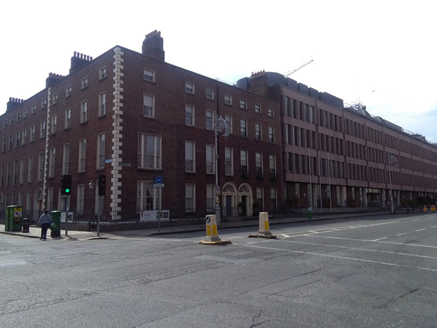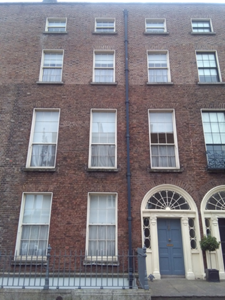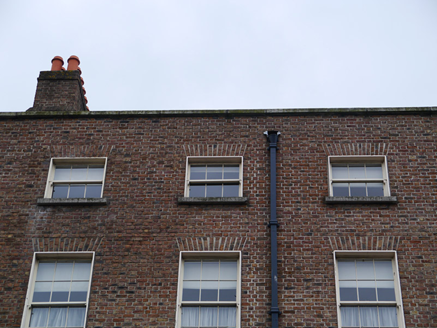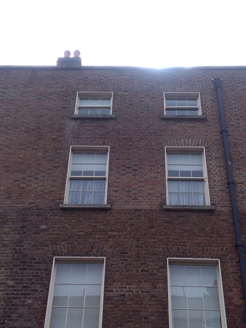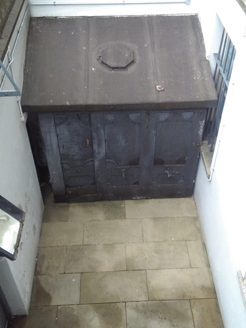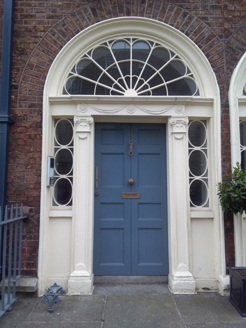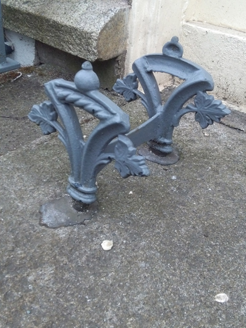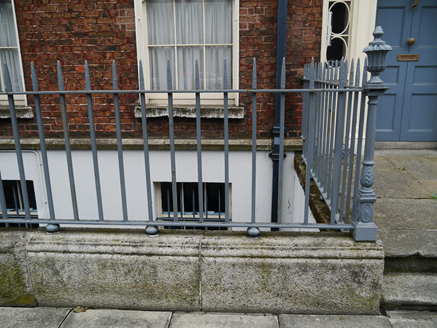Survey Data
Reg No
50100605
Rating
Regional
Categories of Special Interest
Architectural, Artistic
Original Use
House
In Use As
Office
Date
1790 - 1800
Coordinates
316775, 233376
Date Recorded
05/06/2016
Date Updated
--/--/--
Description
Attached three-bay four-storey former house over basement, built c. 1795 as one of pair with No. 30, having glazed full-height recent extension of c. 1980 to rear (shared with adjoining buildings). Now in use as offices and museum. Pitched slate roof to front span, having brick parapet with granite coping and parapet gutters. Shouldered brick chimneystack to north with terracotta pots. Replacement boxed metal downpipe and hopper. Flemish bond red brick walling, rebuilt on upper floors, with traces of wigged pointing, on masonry plinth over painted smooth-rendered basement walling. Square-headed window openings, diminishing in height to upper floors, with patent reveals and masonry sills. Replacement timber sliding sash windows with simple horns, nine-over-six pane to first floor, three-over-three pane to top floor, three-over-six pane to basement with wrought-iron grilles, and six-over-six pane elsewhere. Round-headed doorway with stucco surround, engaged panelled pilasters with Adamesque Ionic capitals, stepped entablature with swags and rosettes to frieze, replacement oval-and-bar sidelights, replacement peacock's tail fanlight, and eight-panel replacement timber door with beaded muntin and brass furniture. Granite entrance platform with decorative cast-iron boot-scrape and two bull-nosed steps to street level. Basement area enclosed by wrought-iron railings on moulded granite plinth with decorative cast-iron corner posts. Rear enclosed by late twentieth-century buildings. single-pitched painted cast-iron or timber coal-house in basement areas.
Appraisal
A late eighteenth-century Georgian row house, forming a pair with No. 29, located on what was the longest Georgian streetscape in Dublin. It has an exuberant doorcase, matched by No. 30, and together with the setting details and attractive box-profile downpipes, contributes significantly to the historic streetscape. It formed part of the context that was dominated by the now demolished 1960s office block that replaced a row of seventeen Georgian houses. Although Fitzwilliam Street Lower appears on Barker's map of Merrion Square of 1762, the first houses were built about 1793. Overall, its fine proportions, albeit modest in comparison to those on neighbouring Merrion Square, remain intact and the building is an important component that illustrates the early appearance of this principal Georgian street.
